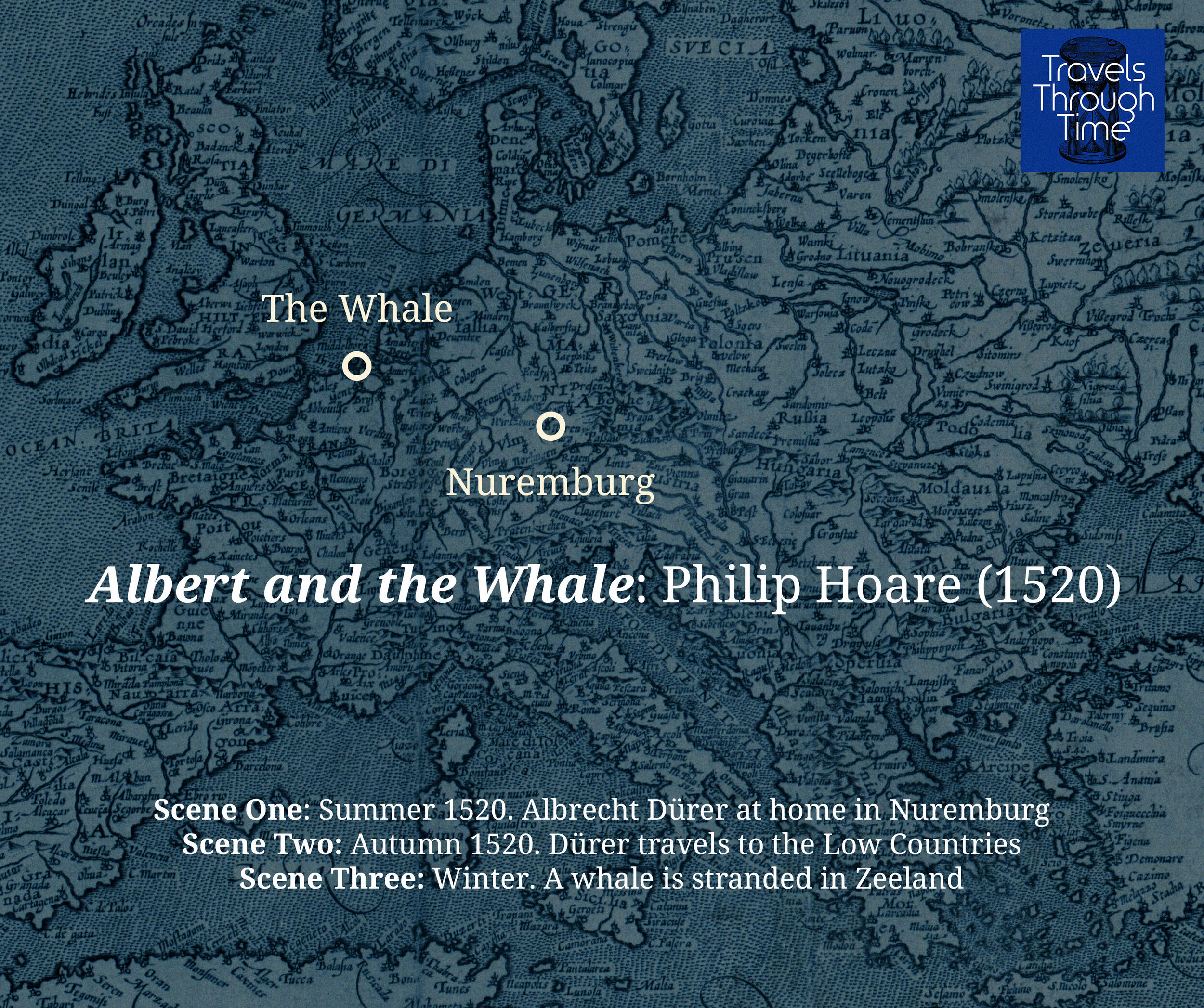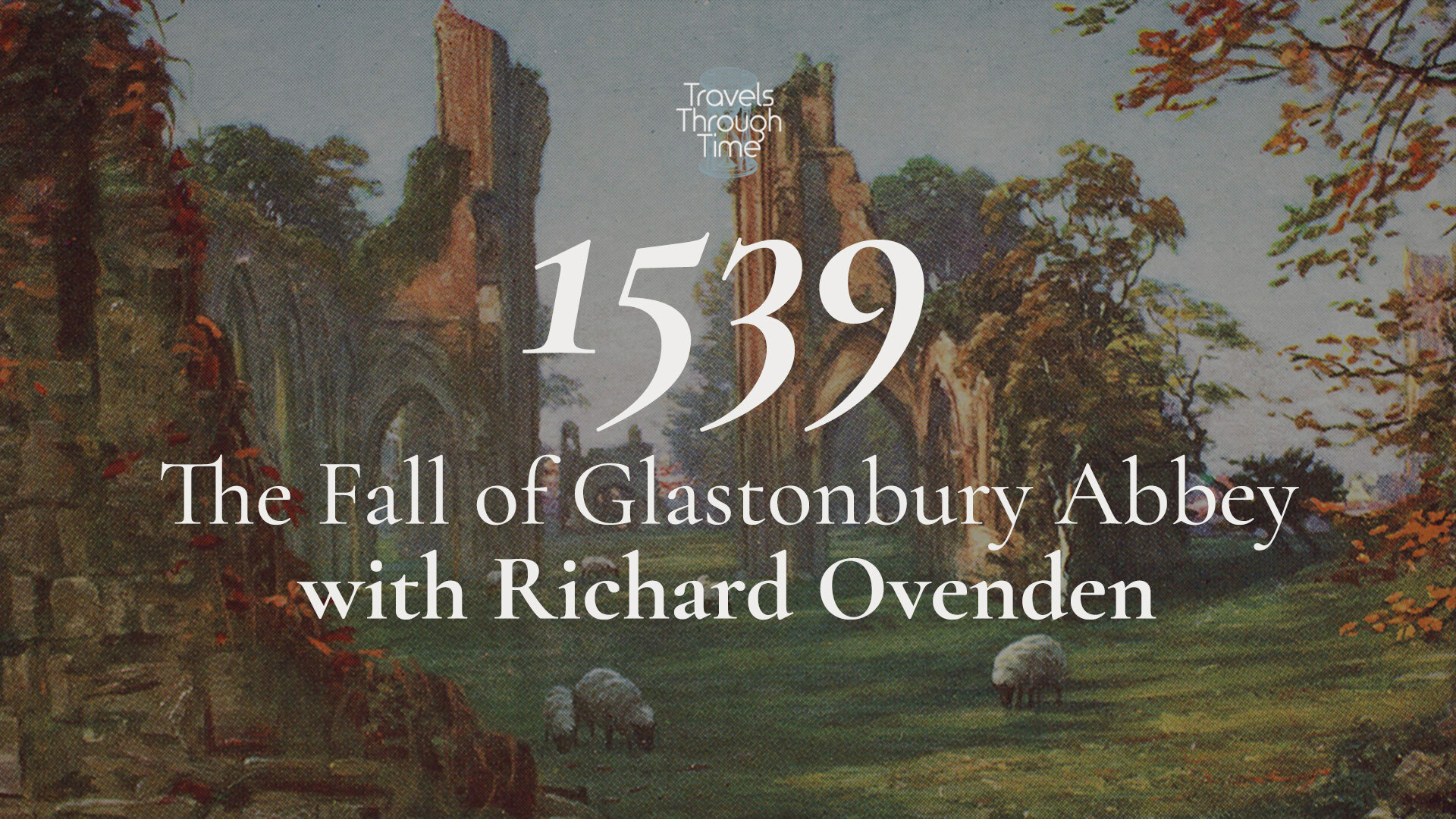Albert and the Whale: Philip Hoare (1520)
‘Philip Hoare looking through the eye of a whale: Texel Island, Netherlands: photo: Jeroen Hoekendijk
In 1520 the artist Albrecht Dürer was on the run from the Plague and on the look-out for distraction when he heard that a huge whale had been beached on the coast of Zeeland. So he set off to see the astonishing creature for himself.
In this beautifully-evoked episode the award-winning writing Philip Hoare takes us back to those consequential days in 1520. We catch sight of Dürer, the great master of the Northern Renaissance, as he journeys out to reach the whale. At this moment, the fortunes of his life would turn.
*** [About our format] ***
*** Listen to the episode Apple Podcasts ***
You could hardly move for talented painters in the Renaissance period. Many of them are still household names today, and rightly so. One or two stand out from the crowd, they inspire obsession centuries on, possess cult status.
Albrecht Dürer is one of these rare creatures, the foremost artist of Northern Europe in this period, a man whose artistic genius and visionary way of seeing the world feel as real and urgent now as they did in his own lifetime. His depictions of the Rhinoceros, the Young Hare and the mysterious, symbolic Melancolia, are some of the most famous images ever created.
Philip Hoare on Dürer’s artistic temperament.
In 1520 Dürer had left his home in Nuremburg to escape the Plague. In the Low Countries he encountered a variety of entrancing objects that had been brought back to Europe from the New World. Then, late in the year, he heard the news that a huge whale had been beached on the coast of Zeeland. He set out to see it for himself.
This trip to Zeeland is the starting point for Philip Hoare’s captivating and acclaimed, Albert and the Whale, a book that is inspired by his own personal fascination with the sea and its inhabitants.
Dürer was no ordinary man, so it is fitting that this is no ordinary biography. Hoare, weaves a lyrical, dream-like world that is every bit as compelling as the worlds in Dürer’s pictures. He takes the reader on a strange and wonderful journey through Dürer’s own experiences and then onwards through the centuries following the tendrils that stretch out through time as his genius touches people of different generations.
Goethe falls under Dürer’s spell, Thomas Mann tries to rescue him from the Nazis, William Morris sits, mesmerised, in front of his etchings, while Andy Warhol is buried beneath a gravestone carved with his Praying Hands.
Philip Hoare describes Dürer as a ‘science fiction artist, almost like a magician, mysterious, incredibly imaginative but also slightly dangerous…’. Or as far as I’m concerned - completely irresistible. I hope you feel the same.
***
Click here to order Philip Hoare’s book from John Sandoe’s who, we are delighted to say, are supplying books for the podcast.
*** Listen to the podcast ***
Show notes
Summer 1520: Nuremberg, home of Albrecht Dürer, at the height of its power as an imperial city, of art and technology - 100 printing presses, the first globe made there, the first reports of the New World published: a Silicon Valley, of intense wealth. Dürer reigns over it, the most famous artist of the Northern Renaissance, like Warhol in his Silver Factory, reproducing his own work. He is as famous, creating portraits of himself.
Autumn 1520: The Low Countries. Driven out of Nuremberg by the plague and a city in lockdown, Dürer escapes to the seaside. He's acclaimed in Antwerp and Brussels, sees astonishing Aztec treasures - stolen gold from the New World; lions, and, perhaps, a dead walrus. He collects bizarre things: coconuts, shark's fins, monkeys and parrots. He also sees strange bones, said to be relics of giants.
Winter 1520: Halfway through his year away, Dürer is gambling and drinking with his wealthy friends, also on the run from the plague. He is selling and exchanging his art, waiting for the arrival of the new Holy Roman Emperor, hoping he will renew his pension - the money is running out. He's getting desperate. Then he hears a whale has been stranded in Zeeland. This is his chance to make his greatest print, a follow up to his hit woodcut of a rhinoceros. What follows next is near disaster, a mortal act. It changes his life.
Memento: A lock of Dürer’s hair (which Hoare would use to regenerate him and then get him to paint his portrait)
People/Social
Presenter: Violet Moller
Guest: Philip Hoare
Production: Maria Nolan
Podcast partner: Colorgraph
Follow us on Twitter: @tttpodcast_
Or on Facebook
See where 1520 fits on our Timeline
About Philip Hoare
Philip Hoare is the author of nine works of non-fiction, including biographies of Stephen Tennant and Noël Coward, and the studies, Wilde's Last Stand and England's Lost Eden. Spike Island was chosen by W.G. Sebald as his book of the year for 2001. In 2009, Leviathan or, The Whale won the 2009 BBC Samuel Johnson Prize for non-fiction. It was followed in 2013 by The Sea Inside, and in 2017 by RISINGTIDEFALLINGSTAR. His new book, Albert & the Whale led the New York Times to call the author a 'forceful weather system' of his own.
He is Professor of Creative Writing at the University of Southampton, and co-curator, with Angela Cockayne, of the digital projects http://www.mobydickbigread.com / https://www.ancientmarinerbigread.com. His personal website is www.philiphoare.co.uk
Dürer fans can also look forward to the upcoming exhibition at the National Gallery this November.
Map showing the location of the scenes in 1520
Background Map: Library of Congress
Dürer & his work
Listen on YouTube
Complementary episodes
[Live] Thomas Cromwell and Anne Boleyn: Prof. Diarmaid MacCulloch (1536)
In this wonderfully described episode one of Britain’s greatest historians, Diarmaid MacCulloch, takes us back to the dramatic heart of Henry VIII’s Tudor court. The character in focus is one of the most fascinating of all: Thomas Cromwell.
The Fall of Glastonbury Abbey: Richard Ovenden (1539)
The 1530s were a period of profound religious change in England as reformers sought to bring down the old Catholic structures and replace them with the new pillars of Protestantism. In doing so, they unleashed a wave of violence and destruction of epic proportions.
Click here to order Albert & the Whale by Philip Hoare from our friends at John Sandoe’s Books.
Long anticipated voyage through the overlapping currents of nature, life and art. PH won the Samuel Johnson Prize for Leviathan, or The Whale; here he attempts to answer why Durer’s art endures. (John Sandoe’s)













